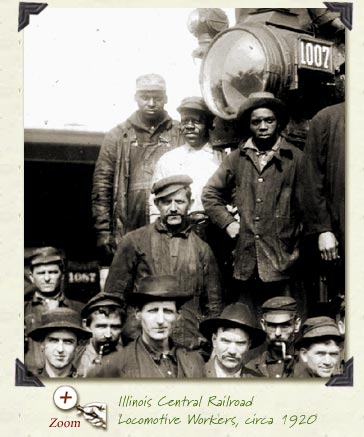
African American Railroad Workers

During the early years of the twentieth century, African Americans
living in southern states moved to northern cities where jobs could
be found. Sometimes crop failures motivated them to move. Racial hatred
and prejudice also caused African Americans living in the south to
look for work in states to the north.
While many African Americans migrated to large cities, a smaller
number moved to communities like Waterloo. Between the years of 1910
and 1920 the small community of African Americans in Waterloo expanded
from a handful of isolated residents to an active community boasting
more than 800 members.
In 1911, a national railroad strike stopped the trains. Workers in
Waterloo refused to work unless the Illinois Central Railroad Company
ICRR provided better work conditions and higher pay.
In response, the ICRR transferred many African American workers from
Mississippi to Waterloo. At first, most African Americans had to live
in box cars in the rail yards. Because of segregation and prejudice,
African American workers were not welcomed to move into most of Waterloo’s
neighborhoods.
Later they came to live in homes in an area shaped like a triangle
bordered by Sumner and Mobile Streets and the rail yards. As this
neighborhood developed, churches and businesses were formed, becoming
the core of the community. African Americans not only helped to build
the railroad, but also helped to create Waterloo’s diverse cultural
heritage.

|



